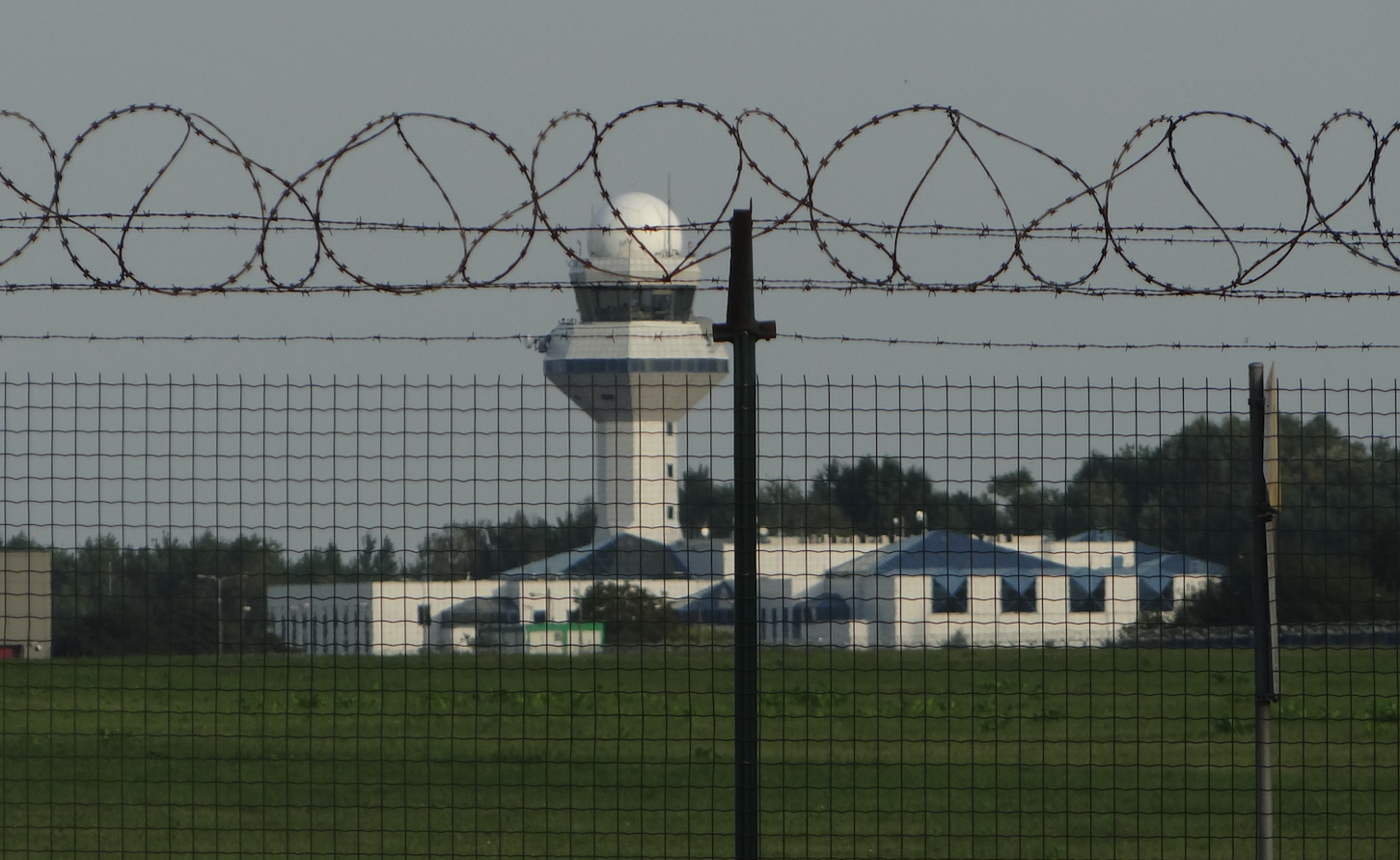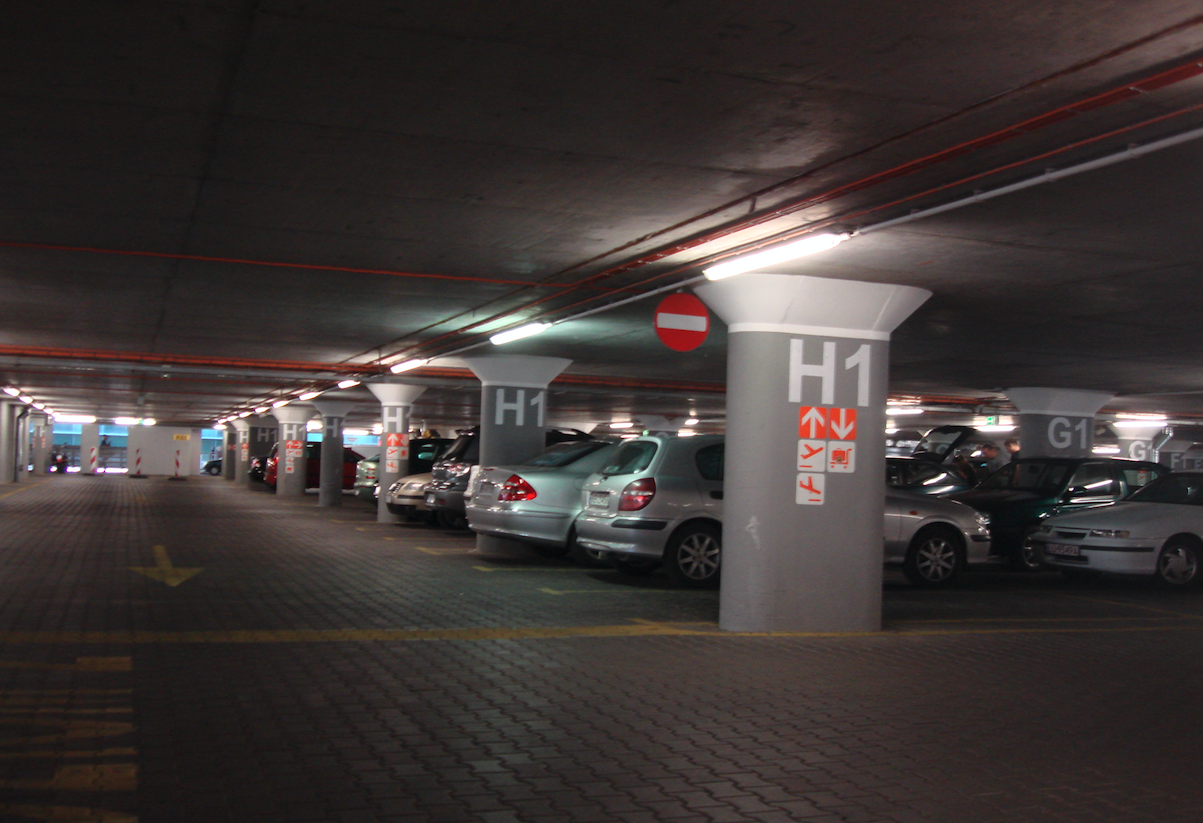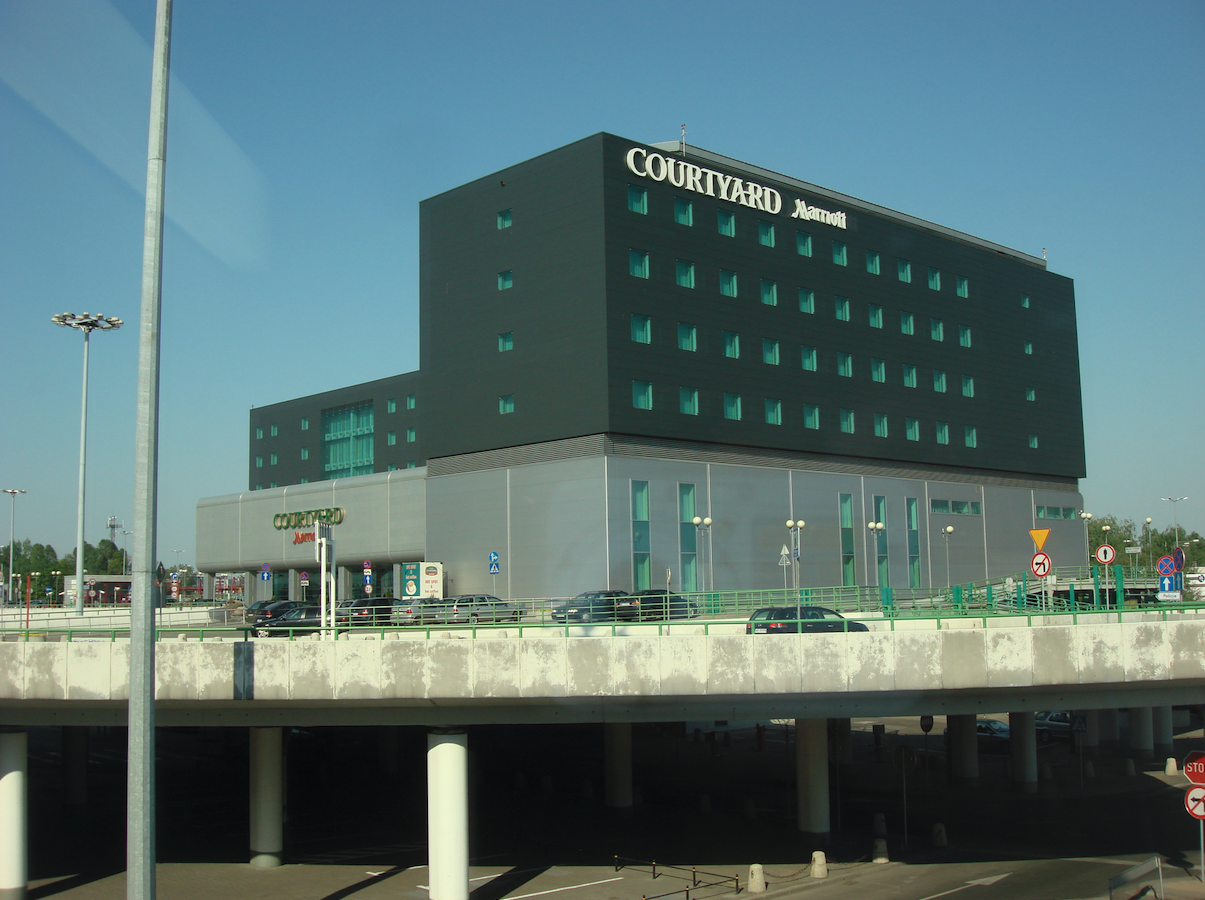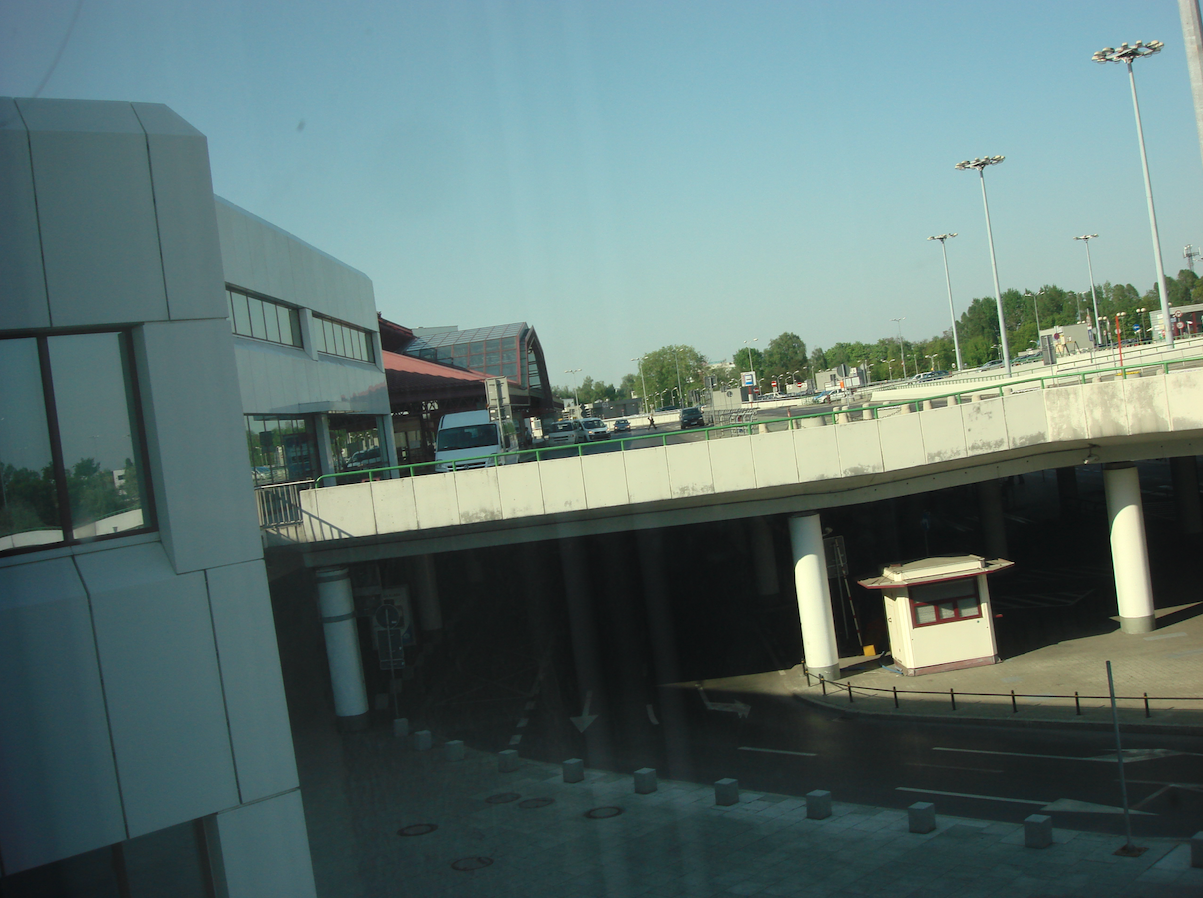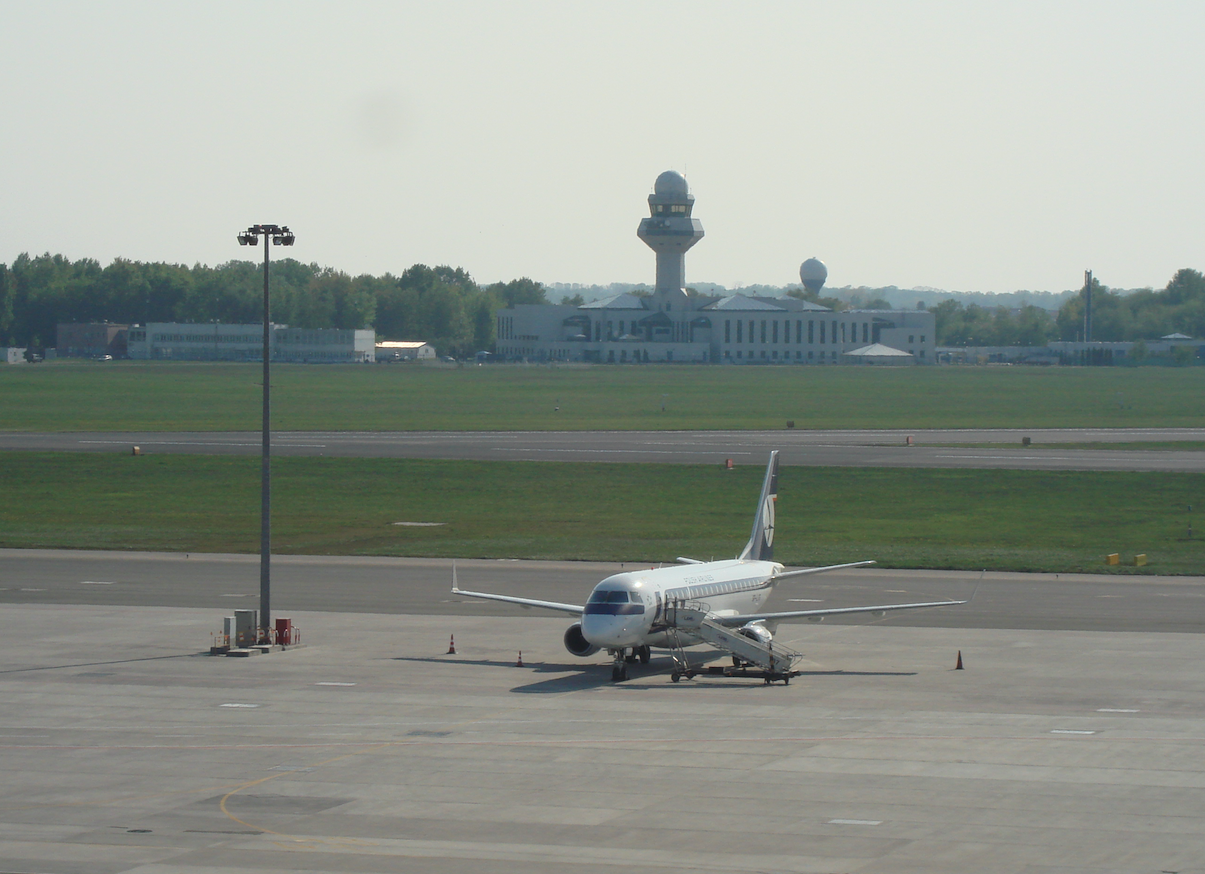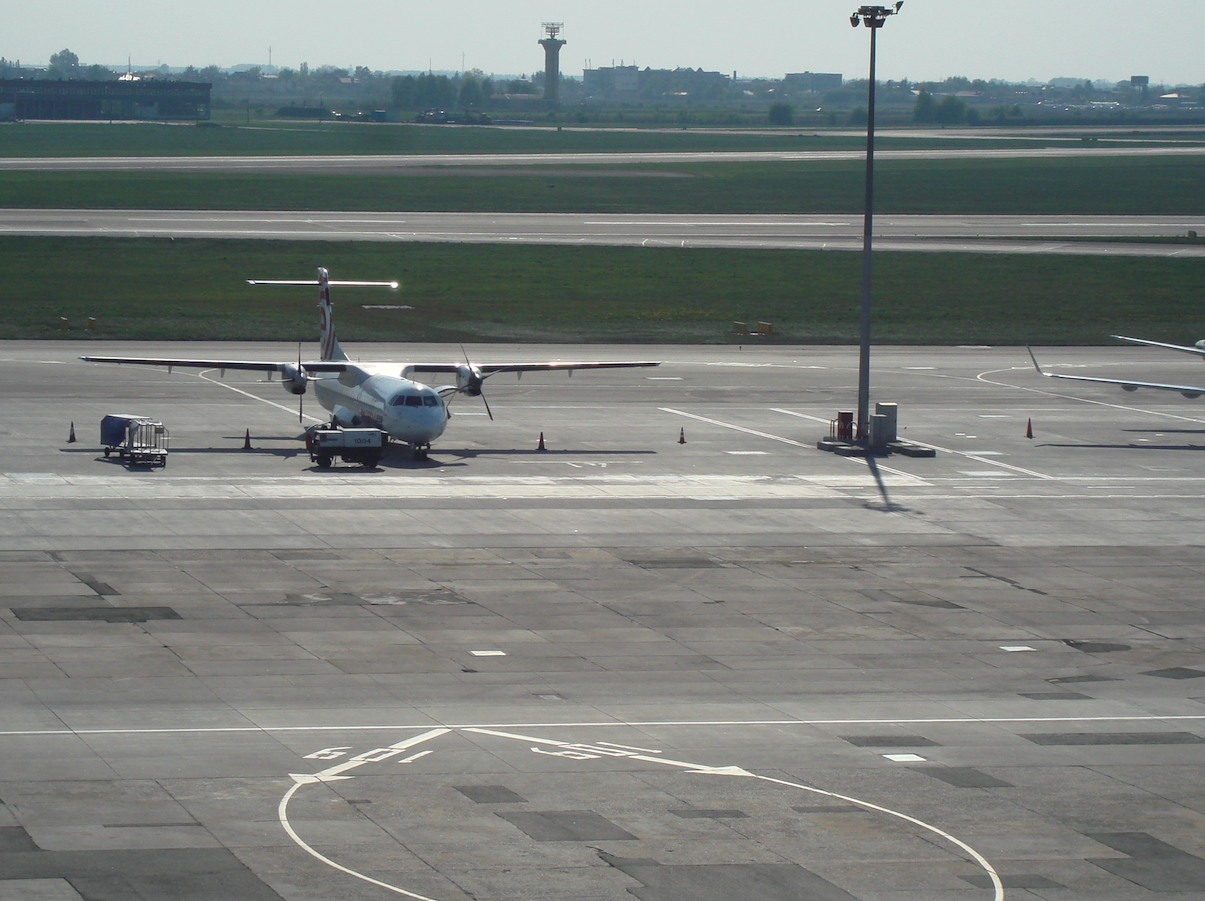Warszawa 2019-02-25
Airport Okęcie.
Development of Okęcie Airport.
In 2012, the Modlin airport was launched for commercial purposes and in the first years of operation it recorded a significant growth in passenger transport. In 2018, over 3 million passengers were served here. It seemed that the Modlin airport would take passengers to the Okęcie airport. However, this did not happen and the Okęcie airport also recorded an increase in the number of passengers served. In 2017, 15,730,330 passengers used the Okęcie airport. Ten years earlier (2007) there were 9,270,000 passengers. In 2017, 84,389,400 kg of goods were handled at the Okęcie airport and 157,044 air operations were performed.
In 2010, Terminal 1 and Terminal 2, commissioned in 2007, were renamed Terminal A after being merged into one complex. At the same time, the VIP Terminal was renamed the General Aviation Terminal.
In 2011, the first part of the pier was added for use.
In 2012, the Warsaw Chopin Airport railway station was put into use. The railway made it possible to get to the airport more efficiently.
In the following years, the platform slab was renovated and enlarged, increasing the number of aircraft parking spaces. Two new taxiways were built. Two more aircraft de-icing stations were built.
In 2014, free, unlimited, wireless Internet was launched at Okęcie Airport.
In 2015, a roofed and glazed observation deck was put into use. Also in 2015, a second Roman Catholic chapel and a prayer room for travelers of other denominations were opened to travelers. Also in 2015, photovoltaic cells were installed on the roof of the terminal to supplement the electricity consumption balance. It is a small solar power plant.
In recent years, there has also been a change in the companies servicing aircraft and passengers. The handling companies operating at the Okęcie airport include: LS Airport Services, Welcome Airport Services, BGS Baltic Ground Services, Impel Airport Services Ltd., Excel handling Ltd. Meals on board are provided by Do & Co. The fuel is supplied by: ORLEN Aviation, LOTOS, Baltic Ground Services.
Access to the airport is still provided by public transport: lines 175, 188 and the recently launched line 148 – Metro Imielin, Gocław to the Wiatraczna roundabout. (journey time 62-70 minutes).
Improved flight safety.
On March 30, 2018, Chopin Airport received a certificate from the President of the Civil Aviation Authority authorizing it to perform landing operations in conditions of limited visibility, for category III A, on Runway 3, direction 33.
The certificate for ILS III A means that planes can land in much weaker weather conditions, which in turn will translate into fewer diversions to other airports, as well as reducing potential delays. The capital’s airport is the first one in Poland with the 3rd ILS category.
The new system was installed in the direction of landings "33" (landings from Piaseczno), where, according to statistics, most landing operations are performed. So far, landing was possible under conditions in which vertical visibility (i.e. the height at which the pilot must see the runway) was not less than 30 meters and 300 meters of visibility along the runway (RVR). The latest solutions enable landing even with vertical visibility below 30 m and horizontal visibility 175 m. As part of adapting the systems and procedures to the new category, the conditions for taking off in conditions of limited visibility have also changed from the RVR value not lower than 150 m to a value not lower than 125 m.
At the same time, navigational and protective lighting on runways and taxiways were modified, as well as new approach lights. The navigation lighting control system was modernized.
The future of Okecie airport. 2019.
The lack of development opportunities for the Okęcie airport is obvious. The airport area is increasingly surrounded by the road network and other housing estates. In 2016, it was a reason to renew the idea of building a Central Airport for the Republic of Poland.
In November 2017, the Government of the United Right, under the direction of Prime Minister Beata Szydło, decided to start the Central Communication Port program. In January 2018, the Sejm of the Republic of Poland issued a special act. The launch of the Central Communication Port is planned for 2027. For this reason, in January 2019, it was decided to partially modernize Okęcie Airport in order to increase its capacity to 25-30 million passengers. Although the analyzes conducted in 2010 showed that the bottleneck of the airport is two, and they are crossing runways. So, the number of possible flight operations.
For this very reason, more high-speed exits and additional taxiways will be built on the take-off area. First, the works will be carried out at the shorter runway RWY 11/29, and next year at RWY 15/33.
Okęcie Airport is already preparing to expand the so-called northern pier, and in the following years, the construction of the southern pier, which is to extend the Chopin Airport terminal by 2022.
During the implementation of these works, the queues in the security zone and the ticket and baggage control area will be significantly longer. Much more often, passengers will be transported to planes by platform buses. Therefore, the management of the Okęcie airport appealed to passengers to go to the airport 30 minutes earlier than usual.
The expansion of the Okęcie Airport is closely related to the construction of the STH (Central Transport Port) and the two nearby ports of Modlin and Radom. Especially the Radom airport is important because its owner, like Okęcie airports, is PP Porty Lotnicze. In Radom, the runway (RWY) will be extended to 2,500 m, and the terminal is able to handle 3 million passengers. With the next expansion of the terminal in Radom, it will be possible to handle up to 10 million passengers here. Therefore, it is to be expected that some flights from Warsaw will start with transporting passengers to Radom.It should also be remembered that the Łódź-Lublinek port is nearby, also with great potential.
Okęcie airport details. 2019.
Air operations are carried out from two asphalt concrete runways:in the direction of 15/33, 3,690 × 60 m, with a carrying capacity of PCN 88 F/C/X/T,in the direction of 11/29, 2,800 × 50 m, with a carrying capacity of PCN 77 R/A/W/T.Aircraft taxi on 21 taxiways. 42 air operations can be performed at the airport.navigational aids;RWY 11: Calvert cat. II lights (960 m), PAPI, ILS/DME cat. II ,RWY 29: SALS lights (420m), PAPI,RWY 15: SALS lights (420m), PAPI,RWY 33: ALPA-ATA cat. II, PAPI, ILS/DME cat. IIIa lights.VOR/DME OKC 113.45 MHz is also available for all approaches.
Compared to 2009, the radio frequencies have changed slightly and new ones have been added: Radio frequencies Wieża (OKECIE TOWER) 118.305 MHz. Ground service (OKECIE GROUND) 121.905 MHz. ATIS 120.455 MHz. Approaching (WARSAW APPROACH) 128.805 and 125.055 MHz. Authorization (OKECIE CLEARANCE DELIVERY) 121.605 MHz.
Written by Karol Placha Hetman

